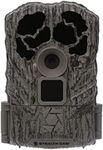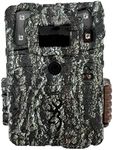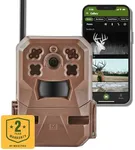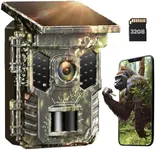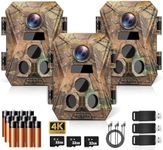Buying Guide for the Best Hunting Camera For Gun
Choosing the right hunting camera for your gun can significantly enhance your hunting experience. A hunting camera, also known as a scope camera, allows you to capture footage of your hunts, which can be useful for reviewing your shots, improving your skills, and sharing your experiences with others. When selecting a hunting camera, it's important to consider several key specifications to ensure you get the best fit for your needs. Here are the most important specs to consider and how to navigate them.ResolutionResolution refers to the clarity and detail of the images and videos captured by the camera. Higher resolution means more detailed and clearer footage. Resolutions are typically measured in megapixels (MP) for photos and pixels (e.g., 1080p, 4K) for videos. If you want highly detailed footage for professional use or detailed analysis, go for higher resolutions like 4K. For general use and sharing on social media, 1080p is usually sufficient.
Frame RateFrame rate, measured in frames per second (fps), indicates how many frames the camera captures per second. A higher frame rate results in smoother video playback, which is crucial for capturing fast-moving targets. Common frame rates are 30fps, 60fps, and 120fps. For most hunting scenarios, 30fps is adequate, but if you want to capture fast action more smoothly, consider 60fps or higher.
Field of View (FOV)Field of View (FOV) is the extent of the observable area captured by the camera. A wider FOV allows you to capture more of the surroundings, which can be useful for tracking game. FOV is usually measured in degrees. A narrow FOV (around 90 degrees) is good for focusing on specific targets, while a wide FOV (up to 170 degrees) is better for capturing broader scenes. Choose based on whether you need detailed shots of specific targets or a broader view of the hunting area.
Battery LifeBattery life determines how long the camera can operate before needing a recharge or battery replacement. Longer battery life is essential for extended hunting trips. Battery life can vary widely, from a few hours to several days. Consider how long you typically spend hunting and choose a camera with a battery life that matches your needs. Some cameras also offer replaceable batteries, which can be handy for longer outings.
DurabilityDurability refers to the camera's ability to withstand harsh conditions such as rain, dust, and impacts. A durable camera is essential for hunting, as it will be exposed to various outdoor elements. Look for cameras with rugged designs, waterproof ratings, and shock resistance. If you hunt in extreme conditions, prioritize cameras with higher durability ratings.
Mounting OptionsMounting options determine how the camera can be attached to your gun. Different cameras offer various mounting systems, such as rail mounts, scope mounts, or barrel mounts. Ensure the camera you choose is compatible with your gun's mounting system. Consider how easy it is to attach and detach the camera, as well as how securely it stays in place during use.
Night VisionNight vision capability allows the camera to capture clear footage in low-light or nighttime conditions. This is crucial for hunters who operate during dawn, dusk, or at night. Night vision is typically achieved through infrared (IR) technology. Look for cameras with good night vision ratings if you plan to hunt in low-light conditions. Some cameras offer adjustable IR settings to balance visibility and battery consumption.





